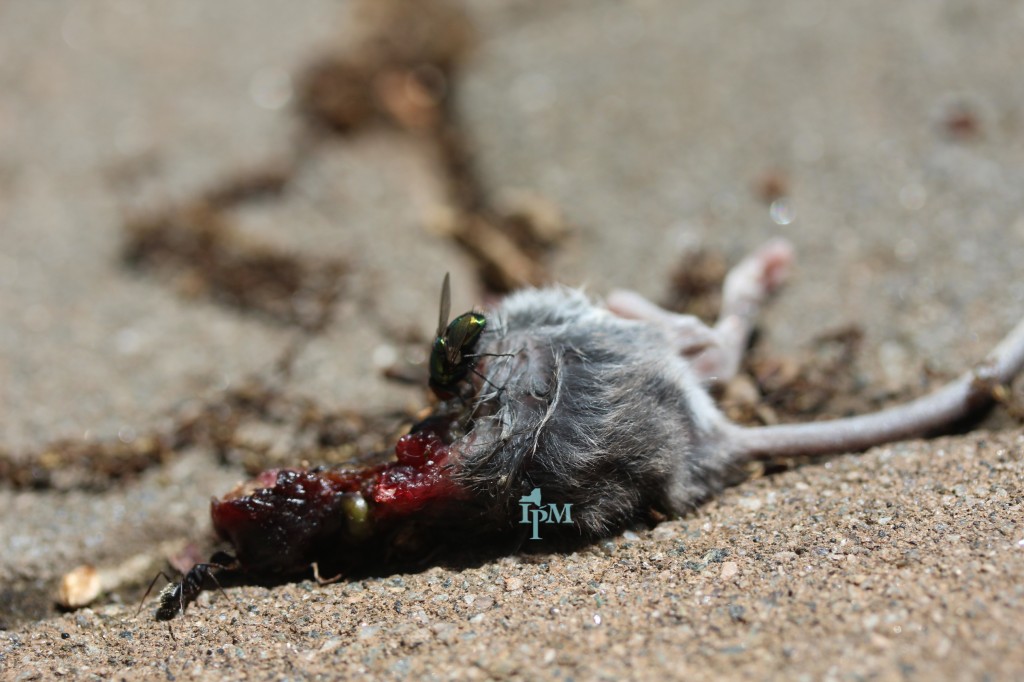Those of us who work in “structural pest management” (think office buildings, schools, or homes) tend to see the same cast of characters each year: cockroaches, ants, termites and bed bugs to name a few. But every now and then an interesting critter will show up that has a neat story to tell. Enter Brachymeria fonscolombei.
The Situation. In the past few weeks, I’ve heard from homeowners who’ve found small, compact (1/8 – 1/4 inch), black and red insects in their windowsills — with no apparent explanation for their presence. Indeed, these are wasps. But unlike your garden-variety wasps, B. fonscolombei won’t sting you or your pets.

How to ID It. Like other wasps in its family, the Chalcididae, B. fonscolombei has large, toothed, dark-red hind femurs with a white dot. And parasites they are — but not the kind that could ever make us sick.
The Story. Brachymeria fonscolombei lay their eggs in the larvae of flies — especially house, bottle, and flesh flies. Finding them in your home follows a series of rather graphic events. It goes like this: not too long ago, a small animal — a mouse, say — died within your walls. Flies attracted to the scent laid their eggs on its body. When those eggs hatched into larvae (“maggots” in the common lingo) along came B. fonscolombei — and laid its eggs in them. After three weeks or so (or if overwintering, as much as five or six months) a single adult wasp emerged from each maggot and looked for a way to get outdoors.


What to Do. It bears repeating: Brachymeria are wasps, but they can’t sting people. To manage them, you have to find and remove their food source (that would be fly larvae) and the source’s source (some kind of decaying stuff). Examples include pet poop, old food stuck on the bottom of a garbage can — and dead animals. If that’s is a mouse or rat that dined on rat bait, then inconveniently died inside your wall, think about using snap traps instead. With snap traps, you can remove dead rodents quickly — before the flies do it for you.
Did You Know? Cluster flies are a pest in upstate New York that congregate by the scores or hundreds in attics and other protected spaces. Whereas Brachymeria is a parasite of flies, cluster flies are parasites of earthworms!